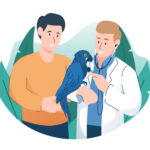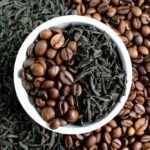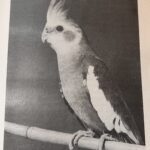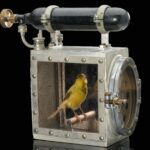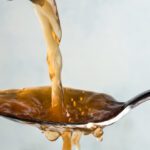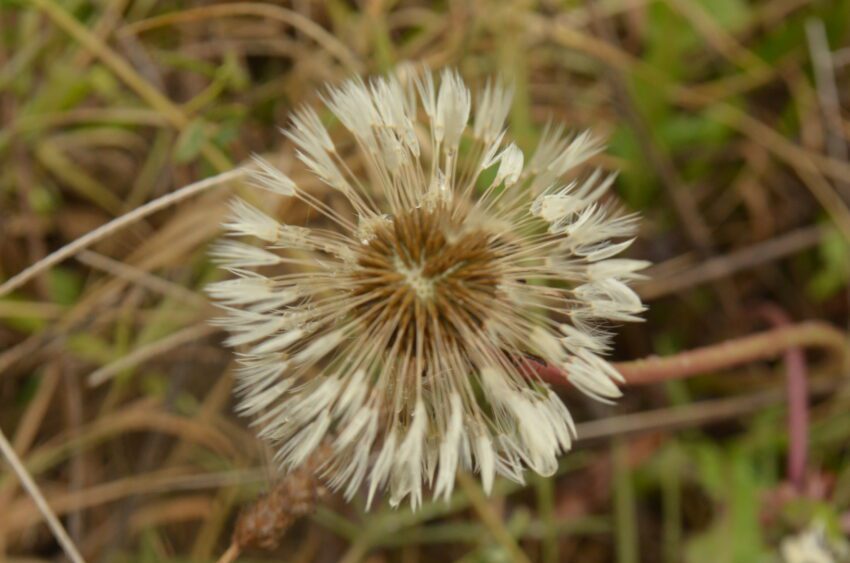
How do I know whether a plant is safe or toxic?
I’ve long been frustrated that there are so many lists out there of safe and toxic plants, but nearly all of them don’t cite ANY references. It doesn’t exactly inspire confidence. On top of that, many of them disagree with each other and offer black-and-white answers when it is sometimes more nuanced.
The good news is I found several sites that collectively form the largest and most thoroughly researched list of safe and toxic plants in these categories:
- Table Food
- Vegetables
- Fruit
- Houseplants
- Flowers
- Grass
- Wood
- Herbs
- Nuts
- Sprouted food
- Weeds
The vast majority of the credit goes to this site which covers over 1,000 plants and cites over 50 sources:
For wood (perches), the credit goes to these two sites:
- The Wood Database—Wood Allergies and Toxicity
- Mario D Vaden—Bird perches, toys. Safe and harmful perch wood
To make it easier to find different types of plants from different sites, I put all their information into one giant table that can be easily searched and sorted.
I’ve created a separate page for the table so that it can easily be referred to:
Ultimate list of 1,400+ bird-safe and toxic plants
References
Yellow Rock Online – Cockatiel Nutrition, Health, Wellbeing & First Aid
- UC Davis School of Veterinary Medicine: Pets and Toxic Plants
- Cornell University: Plants Poisonous to Livestock and other Animals
- University of Illinois: Plants Toxic to Animals
- The Humane Society: Plants Potentially Poisonous to Pets
- The ASPCA: Toxic and Nontoxic Plants for Animals
- VCA Hospitals: Plants That are Safe for Birds
- Wiley Online Library: Plants not Reported to be Toxic
- Colorado State University: Guide to Poisonous Plants
- Rural Industries Research and Development Corporation: The palatability, and potential toxicity of Australian weeds to goats
- Wikipedia
- Mike Owen (cites research) – The Apple Seed Cyanide Myth
- Profitable & Sustainable Primary Industries – Prussic acid poisoning in livestock
- Profitable & Sustainable Primary Industries – Garden plants poisonous to people
- University of Leeds – Amygdalin content of seeds, kernels and food products
- Kansas State University Agricultural Experiment Station and Cooperative Extension Service – Prussic Acid Poisoning Forage Facts
- Food Chemistry – Total cyanide determination of plants and foods using the picrate and acid hydrolysis methods
- Julia F Morton (cites research) – Fruits of Warm Climates
- Nordic Co-operation – Cucurbitacins in plant food
- USDA Agricultural Research Service – Poisonous Plant Research
- Lafeber Company – Foods Toxic to Pet Birds
- NutritionData – Serachable food database
- Medical News Today – The health benefits of bok choy
- Nutrition And You.com – Okra nutrition facts
- Botanical-online – Medicinal plants searchable database
- Passionflow – Passiflora toxicity
- Parrot Talk – St John’s Wort and the use of Hypericin
- Journal of Agricultural Food Chemistry – Artemisia dracunculus L. (Tarragon): A Critical Review of Its Traditional Use, Chemical Composition, Pharmacology, and Safety
- National Institutes of Health, Office of Dietary Supplements – Valerian
- International Journal of Food, Nutrition and Dietetics – Nutritional and Medicinal Properties of Valerian (Valeriana Officinalis) Herb: A Review
- Edible Wild Food – Creeping Charlie
- European Medicines Agency – Assessment report on Levisticum officinale Koch, radix
- Journal of Ethnobiology and Ethnomedicine – Organic parasite control for poultry and rabbits in British Columbia, Canada
- National Library of Medicine – Polyphenol extracts from Punica granatum and Terminalia chebula are anti-inflammatory and increase the survival rate of chickens challenged with Escherichia coli
- Birds Online – Plant database
- BioMed Research International – Underestimating the Toxicological Challenges Associated with the Use of Herbal Medicinal Products in Developing Countries
- New South Wales, Department of Primary Industries – St. John’s wort (Hypericum perforatum)
- Myfitnesspal – Searchable database
- WebMD, Vitamins & Supplements Center – Searchable database
- Herbal Medicine: Biomolecular and Clinical Aspects – Evaluation of the Nutritional and Metabolic Effects of Aloe vera
- PoultryDVM – Ashwagandha
- National Library of Medicine – Chronic toxicity evaluation of Morinda citrifolia fruit and leaf in mice
- Food and Agricultural Immunology – Effects of short-term consumption of Morinda citrifolia (Noni) fruit juice on mice intestine, liver and kidney immune modulation
- Oxford Clinical Kidney Journal – Star fruit: simultaneous neurotoxic and nephrotoxic effects in people with previously normal renal function
- Journal of Food Science Chemistry – Reduction of phytic acid in major cereals, legumes, oilseeds and nuts
- FoodSafety.gov (official site of the US Government) – Food safety by type of food
- Journal of the American Oil Chemists’ Society – Control and removal of aflatoxin
- New St. John’s – What are aflatoxins?
- National Library of Medicine, National Center for Biotechnology Information – Prevalence of Salmonella in Cashews, Hazelnuts, Macadamia Nuts, Pecans, Pine Nuts, and Walnuts in the United States
- New St. John’s – What is salmonella?
- Agronomy Group, Institute of Natural Resources, New Zealand – Pasture Plant Identification
- Pastures Australia – Comprehensive plant list
- Handbook of Toxicologic Pathology – Trisetum flavescens
- DSM Dutch State Mines (DSM) – Vitamin D
The Wood Database—Wood Allergies and Toxicity
- Unknown author – Woods Toxic to Man (out of print book)
- British Journal of Dermatology – Toxic Woods
- Internation Labor Organization – Encyclopedia of Occupational Health and Safety
- American Medical Association – Handbook of Poisonous and Injurious Plants
- Micromedex – Poisondex (now behind paywall)
- Roy Banner – List of woods and toxicity characteristics
- Health and Safety Executive, UK – Toxic Woods Information Sheet
- Bruce Campbell – Wood/Dust Toxicity
- Neil Ellis – Health Hazards & Wood
- John Mitchell and Arthur Rook – Botanical Dermatology
- Bill Pentz – Medical Risks
- Woodturners Society of Queensland, Inc – Timbers & Health
- USDA Forest Products Laboratory – Tropical Timbers of the World
- USDA Forest Products Laboratory – Properties of Imported Tropical Woods
- Michael Sims and Erica Skadsen, Wood Hazards
Mario D Vaden—Bird perches, toys. Safe and harmful perch wood
- Gillian Willis – pharmacist and toxicologist
- Mario D Vaden – Certified Arborist
- James A Duke – Handbook of Energy Crops
- Wikipedia
- John Mitchell and Arthur Rook – Botanical Dermatology
- VCA Hospitals: Plants That are Safe for Birds
- Avian Medicine – Clinical Avian Medicine and Surgery
